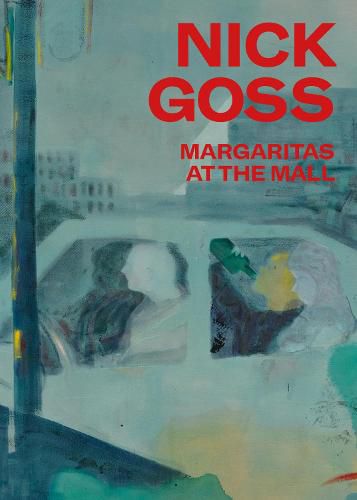Readings Newsletter
Become a Readings Member to make your shopping experience even easier.
Sign in or sign up for free!
You’re not far away from qualifying for FREE standard shipping within Australia
You’ve qualified for FREE standard shipping within Australia
The cart is loading…






In his new paintings Nick Goss seems to aim at the modus of memory; how at any given time it necessarily contains more than one place, more than one logic. On the other it’s easy to read Goss’s works within the logic of the modernist collage, or the cubist compulsion for cutting up. In his canvas Last of England a throng of people are trapped in Weimaresque fashion as if inside a shattered mirror - a bag, a scarf, something carried under an arm all pieces on the same flat plane. But spend more time with them and the effect is not, as in Ho]ch’s surreal assemblages or Kirchner’s brash streetscapes, one of alienation, or disorientation. I see the people in Goss’s new paintings rather, in Burial’s words, as strangers silently believed in, invested with grace. Fragmentation in these works, then, might better be understood, like in music, as a kind of sampling. There’s humour in the detachment, as there is, in Goss’s paintings, always something more to what we see, however flat or rotten or wasted it may seem. It was fun at the bowling alley until it wasn’t anymore … Right?
$9.00 standard shipping within Australia
FREE standard shipping within Australia for orders over $100.00
Express & International shipping calculated at checkout
In his new paintings Nick Goss seems to aim at the modus of memory; how at any given time it necessarily contains more than one place, more than one logic. On the other it’s easy to read Goss’s works within the logic of the modernist collage, or the cubist compulsion for cutting up. In his canvas Last of England a throng of people are trapped in Weimaresque fashion as if inside a shattered mirror - a bag, a scarf, something carried under an arm all pieces on the same flat plane. But spend more time with them and the effect is not, as in Ho]ch’s surreal assemblages or Kirchner’s brash streetscapes, one of alienation, or disorientation. I see the people in Goss’s new paintings rather, in Burial’s words, as strangers silently believed in, invested with grace. Fragmentation in these works, then, might better be understood, like in music, as a kind of sampling. There’s humour in the detachment, as there is, in Goss’s paintings, always something more to what we see, however flat or rotten or wasted it may seem. It was fun at the bowling alley until it wasn’t anymore … Right?